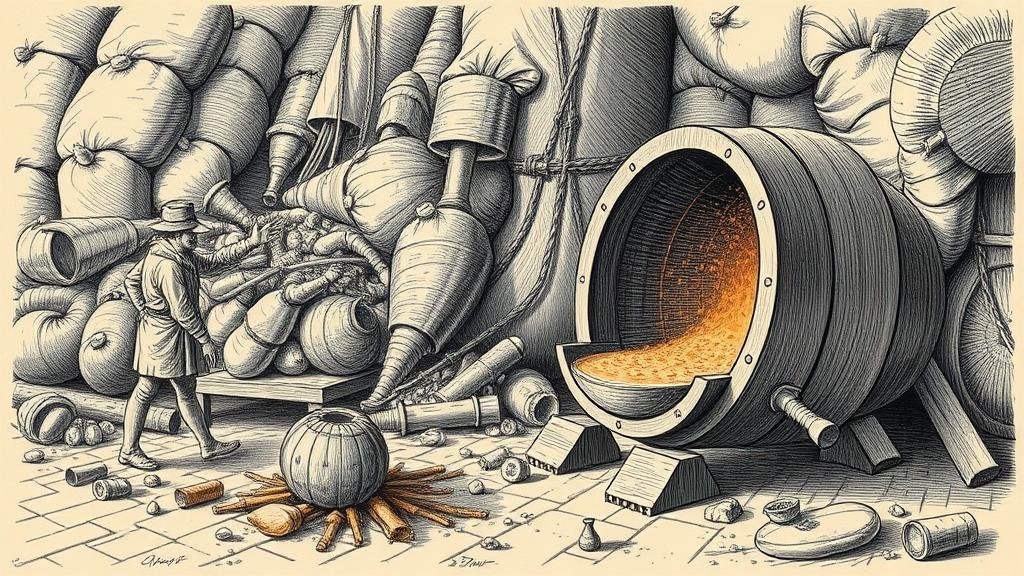How Agricola Described the Metallurgical Process of Cupellation
How Agricola Described the Metallurgical Process of Cupellation
Giorgio Agricola, a 16th-century German scholar, is widely regarded as one of the fathers of mineralogy and metallurgy. His seminal work, De re metallica, published in 1556, provides a comprehensive treatise on mining and metallurgy practices of his time. Among the various processes he described, cupellation stands out as a crucial metallurgical technique used for refining precious metals. This article delves into Agricolas description of cupellation, outlining the processs significance, methodology, and historical context.
The Importance of Cupellation in Metallurgy
Cupellation is a refining process involving the separation of noble metals from lead and other impurities. Agricola recognized its importance in extracting high-purity silver and gold, as it effectively removed base metals, enabling miners and metallurgists to maximize the value of their ores. During the Renaissance, when silver was a dominant currency and gold a symbol of wealth, efficient extraction methods were paramount. Agricolas insights laid the groundwork for modern metallurgical practices.
Agricolas Description of the Cupellation Process
Agricola described cupellation as a two-step process: roasting and refining. The detailed methodology is as follows:
- Roasting: In this initial phase, ores containing lead are heated to oxidize the lead. Agricola suggested that miners use a furnace to apply consistent heat, ensuring that the lead oxides could be produced effectively.
- Refining: After roasting, the lead oxide is combined with materials like bone ash or wood ash in a cupel, a porous container. When heated, impurities within the ore are absorbed into the cupel, leaving behind pure silver or gold. Agricola emphasized that this step required precise temperature control to promote optimal separation.
Real-World Applications of Cupellation
Historically, cupellation was critical in regions with rich silver ores, such as Potosà in Bolivia during the colonial period. The process enabled miners to produce substantial quantities of refined silver, bolstering the Spanish economy and facilitating global trade.
Modern applications of cupellation still find relevance in jewelry and various industrial sectors. For example, precious metals recycling facilities utilize cupellation to recover noble metals from electronic waste, demonstrating the enduring significance of Agricolas work in contemporary practices.
The Scientific Principles Behind Cupellation
The science of cupellation is rooted in thermodynamics and chemistry. The separation of lead from precious metals relies on differences in melting points and the reactions of oxides. When heated, lead and other impurities liquefy, while silver and gold remain solid. Plus, the oxidizing atmosphere in the cupel reacts with the lead, forming lead oxides that are absorbed by the porous material. Agricolas understanding of these principles was remarkably advanced for his time, reflecting a sophisticated grasp of material properties.
Challenges and Considerations
Despite its effectiveness, cupellation is not without its challenges. Temperature control is critical; excessive heat can lead to the loss of precious metals, while insufficient heat may not allow for complete separation of impurities. Agricola addressed these challenges by advocating for thorough knowledge of furnace operation and material properties, which are still vital considerations in modern metallurgy.
Conclusion
Agricolas description of the cupellation process remains a cornerstone in the study of metallurgy. His seminal work provides not only a historical perspective but also insights that are applicable in contemporary industrial practices. Understanding cupellation is essential for those involved in the fields of mining, metallurgy, and recycling, as it encapsulates the essence of refining precious metals while exemplifying the evolution of metallurgical science. enduring legacy of Agricolas work highlights the need for meticulous practices in metal extraction to ensure efficiency and purity in modern applications.



